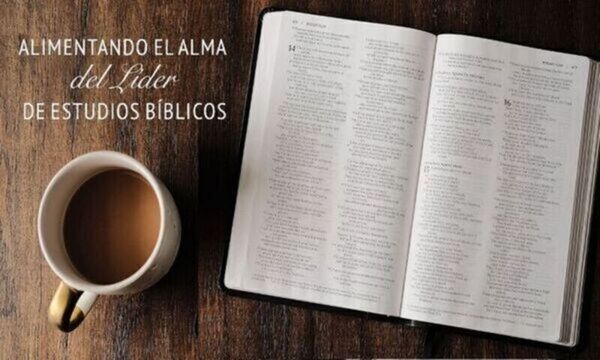I have just finished reading through (most of) the new 1,200+ page book, The Enduring Authority of the Christian Scriptures, edited by D.A. Carson. This book is a splendid example of deep thinking about important subjects presented in a format readable not just for advanced students and scholars, but also for other deep-thinking Christians. I am not saying that the topics are simple. Quite to the contrary, this book tackles some of the most difficult questions surrounding the authority of Scripture. The doctrine of inerrancy in particular is underscored throughout the book.
The Enduring Authority of the Christian Scriptures is organized into four main sections: 1) The first section, Historical Topics, includes discussions of Scripture in the Patristic period, in Reformation and Protestant orthodoxy, in the 17th century with the rise of natural philosophy, among the German Pietists, among Wesleyans, among the ŌĆ£Old Princetonians,ŌĆØ in the writings of Karl Barth, and among Roman Catholics since the 19th century. This first section also includes an essay on the nature of ŌĆ£accommodation.ŌĆØ 2) The second section, Biblical and Theological Topics, includes essays on the Old Testament canon (with a focus on JosephusŌĆÖs testimony), unity and diversity in the Old Testament, Bart EhrmanŌĆÖs equivocation on key terms, why the Walter Bauer thesis of diversity in early Christianity fails, ordering in the biblical canon, the authority of Scripture, the problem of double-authorship (God + a prophet/apostle), the nature of ŌĆ£myth,ŌĆØ the diversity of literary genres, the clarity of Scripture, postconservative theologiansŌĆÖ views of Scripture (think Grenz, Franke), how Jesus viewed the Old Testament, the New Testament authorsŌĆÖ use of the Old Testament, and the question of doctrinal developmentŌĆÖs relationship to Scripture. 3) The third section, Philosophical and Epistemological Topics, addresses key aspects of religious epistemology, the problem of non-foundational epistemologies, how authority and truth relate, a discussion of what inerrancy is and is not, interpretive communities, and the relationship of science and Scripture. 4) The fourth section, Comparative Religions Topics, includes four essays dealing with how Scripture relates to the claims of revelation found in other religions, including the three major world religions besides Christianity, namely Islam, Hinduism, and Buddhism. The book ends with an inviting discussion of how to read Scripture holistically. An introduction at the beginning of the book and summarizing FAQs by D.A. Carson bracket the book.
A few essays I found to be exceptionally thought-provoking. I am not claiming that these are the best in the book, only that I thought these essays were good and helpful when I read them. John WoodbridgeŌĆÖs chapter (ch. 5) on German Pietism and its relationship to inerrancy was eye-opening. I have often heard the claim that Pietists equivocated on inerrancy and thereby opened the door to its rejection. WoodbridgeŌĆÖs conclusion runs counter to such a claim: ŌĆ£Though provisional, our study provides substantial evidence that early German Pietists at the University of HalleŌĆ”upheld the infallibility ofŌĆ”ScriptureŌĆ”ŌĆØ (169). Stephen DempsterŌĆÖs focus on Josephus in his discussion of the Old Testament canon (ch. 11) is crucial for that topic. The chapter on the New TestamentŌĆÖs use of the Old Testament by Moo and Naselli is simply one of the best introductions to the topic IŌĆÖve ever read; I recommend it highly. I appreciate that Carson chose to invite Mark Thompson to write an effective chapter (ch. 20) on the clarity of Scripture since the BibleŌĆÖs perspicuity is one of the least-understood doctrines in our day and one that is constantly being (subtly) attacked. Ida GlaserŌĆÖs chapter (ch. 32) on how Muslims and Christians respectively view their own holy books cleared up some questions I have had on this topic, despite the fact that I lived in a Muslim country for more than seven years. Daniel DorianiŌĆÖs chapter (ch. 35) on reading holistically, including not just understanding, but also believing and obeying Scripture was well-executed and insightful.
There were a number of moments throughout the book where terminological clarifications were painstakingly drawn; I greatly appreciated these efforts to be clear and precise. Three chapters in particular stand out in this regard. Peter WilliamsŌĆÖs explanation (ch. 13) of how Bart Ehrman equivocates on his use of such terms as ŌĆ£Bible,ŌĆØ ŌĆ£original,ŌĆØ and ŌĆ£textŌĆØ was helpful. Bruce WaltkeŌĆÖs chapter, ŌĆ£Myth, History, and the BibleŌĆØ (ch. 18) was similarly useful for clarifying definitions, especially the word ŌĆ£myth.ŌĆØ Paul Helm submitted an extremely well-written (think simple-to-understand) discussion of how the word ŌĆ£inerrancyŌĆØ is used, both by those who support it and those who donŌĆÖt (ch. 28).
At my quick count, almost 40 competent scholars submitted essays for this book. I was surprised at how many excellent essays were included. My experience with such collected essays has been that significant unevenness is to be expected, but this book was well-conceived and well-edited, mostly surpassing my expectations. ItŌĆÖs not that I was equally interested in all the topics; I wasnŌĆÖt. But I understand why all the topics were included and felt that in general the essays in this volume were strong. I recommend this tome (for at 1200 pages, a ŌĆ£tomeŌĆØ it is!)ŌĆöto anyone who wants to think deeply about the ŌĆ£enduring authority of Christian Scripture.ŌĆØ┬Ā
 ║┌┴Ž└·╩Ę
║┌┴Ž└·╩Ę

.jpg)

